Have you found yourself puzzled by the sight of beautiful pumpkin flowers blooming in your garden, only to be disappointed they are not producing any fruit? It’s a situation I’ve experienced myself, so I understand the frustration this can cause. So let’s find out why a pumpkin plant produces flowers but fails to grow pumpkins.
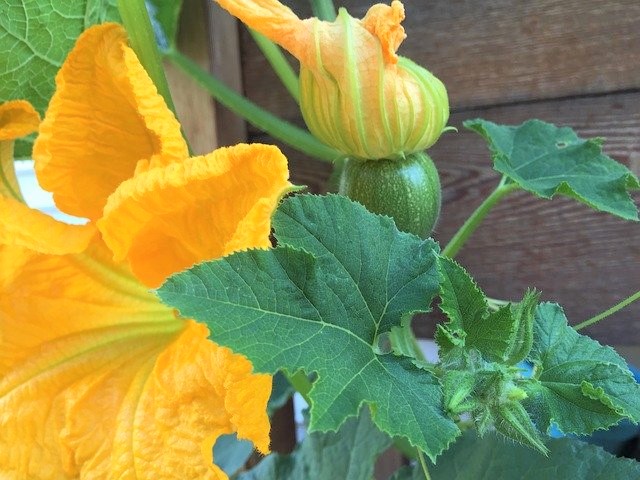
The most common reasons why your pumpkin is flowering but not producing fruit are, no pollination, a lack of female flowers, excessive nitrogen, extreme heat, and drought conditions, too much moisture in the soil, not enough sunlight, and certain pests, and diseases.
It can be extremely frustrating when your pumpkin plants do not produce fruit! Read on to find out more about the most common causes behind this, and the solutions.
Related: Growth Stages of a Pumpkin | Growing Pumpkins At Home | Causes of Dying Pumpkins | Pumpkin Pests And How To Get Rid Of Them
Table of Contents
1. No Pollination
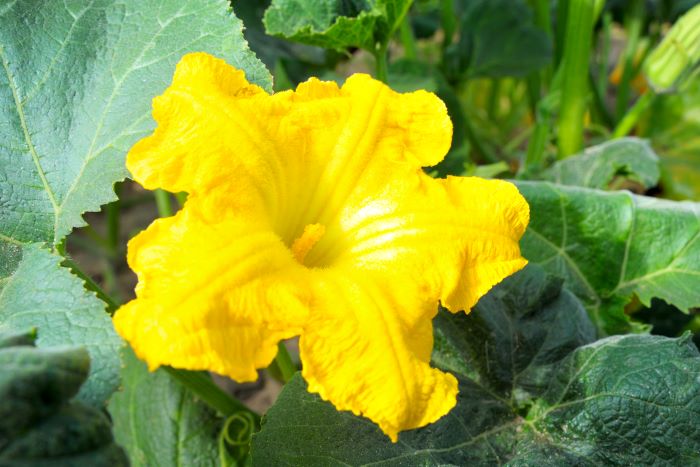
A lack of pollination is the most common and likely reason why pumpkin plants may produce flowers but fail to set fruit. Pumpkin plants have separate male and female flowers, and they rely on the transfer of pollen from the male flowers to the female flowers for successful pollination and fruit development.
When pollination does not occur, the female flowers do not get fertilized, resulting in no fruit formation. You will most likely see the small underdeveloped pumpkin attached to the female flower shrivel up and eventually drop off the plant.
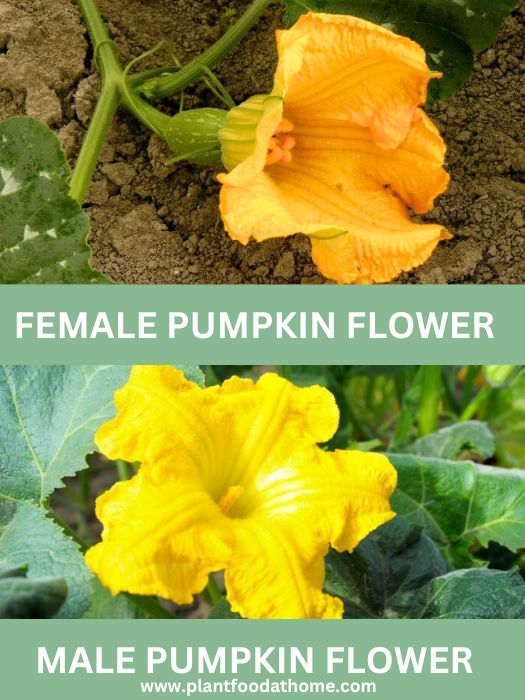
Your pumpkin plants are pollinated through the activity of bees and other pollinating insects. If there is a lack of bees in your garden, your pumpkins will only flower and not produce any fruit. The lack of bees could be caused by the weather conditions in your area as bees do not fly in cooler, wetter weather.
Solution: If a lack of pollination is the reason why your pumpkin plants are flowering and not bearing fruit, you will need to try to attract more bees to your garden.
I have done this by planting a variety of bee-friendly flowers, such as lavender, rosemary and more unusual edibles such as African Blue Basil. It’s a good idea to provide a source of water and avoid the use of harmful pesticides.
Another solution is for you to pollinate your pumpkin plants manually. You can do this by very gently collecting the pollen off the stamen of the male flower with a paintbrush and transferring it to the female flowers.
You can tell the difference between a male and a female flower, as female flowers have an undeveloped pumpkin fruit at the base of the stem. Once you become familiar with the differences between male and female flowers, you will also see the inside of the female flower looks quite different from the male.
Another option to pollinate your pumpkins is to break off a male flower, peel away the petals and then gently brush the exposed stamen around the inside of the female flower. Use one male flower for up to four female flowers. This will reliably pollinate your pumpkins!
2. A Lack of Female Flowers
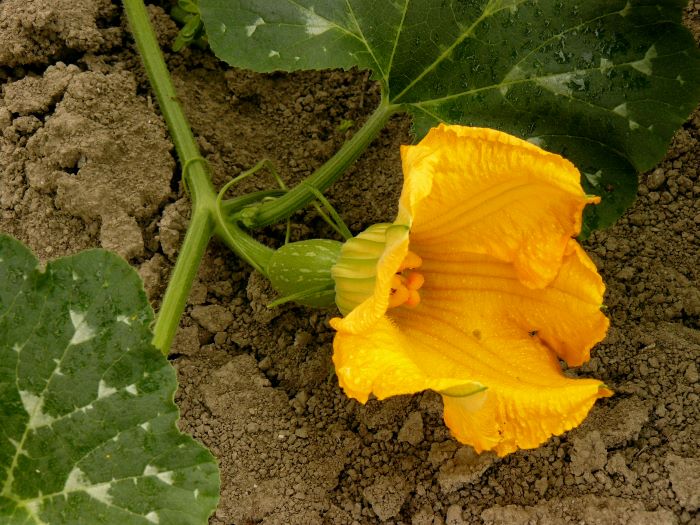
Another reason your pumpkin plant is flowering and not producing any pumpkins is that there is an imbalance between the presence of male and female flowers. This is very normal when the plant first starts flowering.
Male flowers are the first flowers to bloom on your pumpkin plant and usually appear 55 days after planting, with the female flowers following 2 weeks later. It is important to remember that pumpkin plants naturally produce more male than female flowers.
So, the big question is, why are your pumpkins not producing female flowers? One of the main reasons your pumpkin may not be producing female flowers has to do with how they were planted. If your pumpkins were planted too close together, your plants will not get enough sun or nutrients from the soil.
It is important to note that pumpkins planted too close together may still produce female flowers, but may not fruit. This is because bees are unable to reach the flowers to pollinate the blossoms.
Solution: If you have planted your pumpkins too close together, you will need to make space for them to grow. This means removing, or transplanting some of your pumpkin plants. Each pumpkin plant should have at least 10 feet of space to grow.
Another option could be to remove some of the pumpkin leaves to help give more room for the flowers as well as to improve good air circulation. But don’t worry, you don’t have to let those harvested pumpkin leaves go to waste, pumpkin leaves are actually edible!
3. Excessive Nitrogen
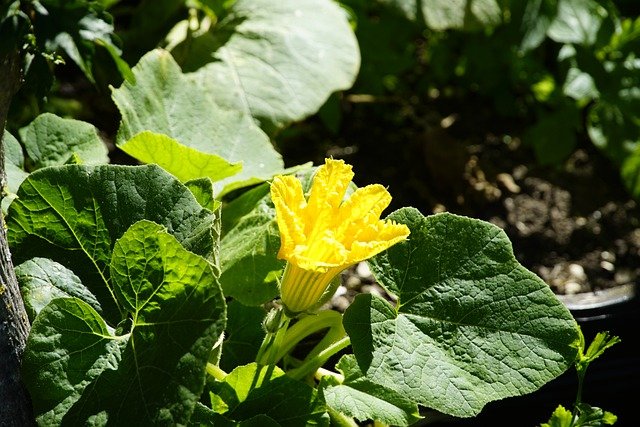
If your pumpkin plant looks lush, and healthy, and is bursting with vines and green foliage you wouldn’t think anything was wrong. However, if your pumpkin plant is producing flowers without bearing fruit, coupled with the aforementioned, it may be receiving too much nitrogen.
Pumpkin plants, like any other plant in your vegetable garden, need a balanced mix of nutrients to thrive. If they receive more or less of one nutrient in particular, like nitrogen, it can cause unwanted effects.
If your pumpkin plant is getting too much nitrogen, it will look extremely healthy, and produce an abundance of leaves, vines, and male flowers. If it is focusing all of its energy doing this, it won’t spare any to produce female pumpkin flowers or fruit.
Solution: Firstly, if your pumpkin plants are getting too much nitrogen, stop fertilizing them straight away. Next, remove any visible excess fertilizer from the soil. Once you have done that you can flush the soil with a good soaking of water to remove the rest.
I recommend doing this in the early morning so the soil has plenty of time to dry out throughout the day as overly damp soil can cause problems.
4. Too Much Moisture in the Soil
Soil that is constantly wet and soggy can lead to pumpkin plants flowering but failing to produce fruit. Pumpkins are thirsty plants, and as such, they need a decent amount of water. However, while water is essential for pumpkin plant growth and development, too much moisture can negatively impact the plant’s overall health.
When your soil has too much water in it, the roots of your pumpkin plants can become waterlogged. When this happens, the roots will not be able to transport water and nutrients from the soil to your pumpkin plant.
Both a lack of nutrients and water will cause your pumpkin plant’s growth to stunt and the leaves to wilt. It will also halt the production of pumpkin flowers and fruit, while any flowers or fruit that are present will likely shrivel up and drop off the plant.
Too much moisture in your soil can be caused by overwatering, excessive rain, and poor-draining soil.
Solution: Pumpkins should be planted in moisture-retaining yet well-draining soil. If your soil is retaining too much moisture you can add compost or shredded leaves to the soil. This will make the soil heavier while achieving the correct amount of water retention. Additionally, pumpkins can be planted in raised mounds to help with water drainage.
If you believe your waterlogged roots have been caused by overwatering, you will need to let the soil dry out before you water your pumpkin plants again. Pumpkins should be watered 2-3 times a week, depending on your climate and natural rainfall. If in doubt, check the soil by lightly scratching the surface about an inch down. If the soil is damp, hold off watering. If it’s dry, it’s time to water your pumpkin plants. You can also you a soil gauge to check to moisture levels.
5. Extreme Heat and Drought Conditions
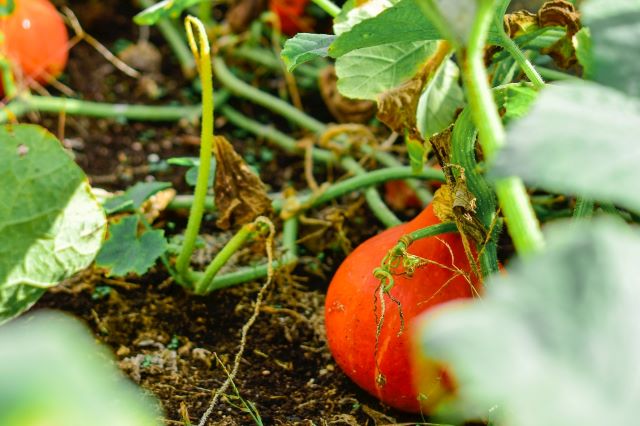
Extreme heat and drought can prevent your pumpkins from producing fruit. Pumpkins thrive in warm temperatures between 68-95 °F (20-35 °C), but when it gets hotter, your pumpkin patch can suffer.
High temperatures lead to heat stress, causing wilting and stressed vines that cease fruit production. Prolonged exposure to extreme heat can even kill your pumpkins.
Drought conditions, often a result of extreme heat or underwatering, can also hinder fruit development. Insufficient water means your plants lack the essential nutrients needed for fruit growth. As a result, your pumpkin plants may produce more male flowers than females and stop yielding fruit.
Solution: If your garden is experiencing a heat wave there are several things you can do to protect your pumpkins from heat stress and drought conditions. Firstly, cover your plants with shade cloth to protect them from the harsh rays of the sun during the hottest portion of the day.
Second, water is extremely important during a heat wave. When the temperature begins to climb, be sure to check your pumpkin plants daily. If the soil is dry when you place your finger an inch down (or use a soil gauge), you will need to water your pumpkin plants.
6. Not Enough Sunlight
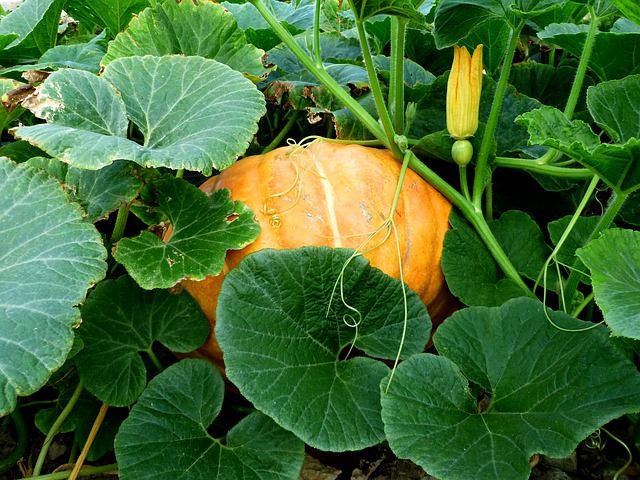
While too much sunlight and heat can cause your pumpkin plants to flower but fail to produce fruit, not enough sunlight can have the same effect. Pumpkin plants need between 6 and 8 hours of sunlight per day to produce fruit. The more sunlight your pumpkins get, the more fruit they will produce.
Sunlight is an essential component of photosynthesis, the process by which plants convert sunlight into energy. If your pumpkin plant is not getting enough sunlight, it will not have the energy to produce fruit.
Solution: If your pumpkins are getting less than six hours of sunlight per day, there are a few solutions. The first thing you should do is have a look at your garden to see if there are any overhanging trees or plants that can be trimmed to increase your plant’s exposure to sunlight.
The second thing you will need to do is check to see if your pumpkin plants are overcrowded. Pumpkin plants that are planted too close together will not get enough light. If that is the case you will need to thin out the leaves on your plants.
For now, it’s best not to transplant an established pumpkin or you will run the risk of the entire plant dying off. For the future, consider the best place to grow pumpkins in your garden for the following season so they will have enough sun.
7. Pests
Pests, both in their adult form and as larvae, can wreak havoc on pumpkin plants, and negatively affect fruit development. Several pests like to munch on your pumpkin plants and some transfer diseases that can have fatal effects on your plants. So it’s well worth being able to identify the culprits and how to get rid of them should you discover pests on your pumpkins.
Striped and Spotted Cucumber Beetles
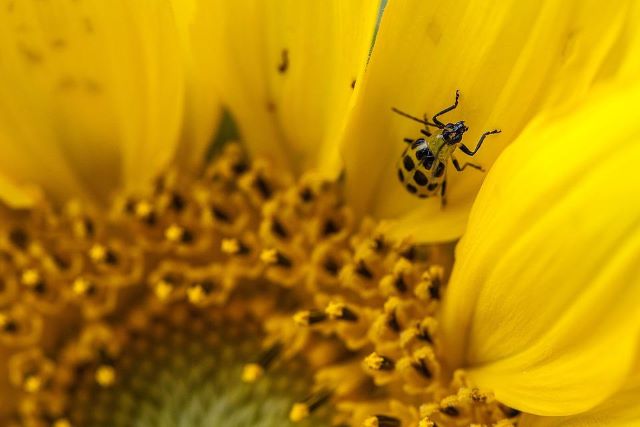
Cucumber beetles are common pests that can damage pumpkin plants and other cucurbit crops. These pesky yellow and black striped or spotted beetles nibble on the vines, leaves, and flowers of your pumpkin plant, stopping pollination and fruit production.
These beetles also transmit bacterial wilt to your pumpkin plants, so it is important to get an infestation under control quickly.
Solution: If you notice feeding damage to your pumpkin plants in addition to a lack of fruit, you will need to inspect your pumpkin plants. You can manually remove any striped or spotted cucumber beetles that you spot on your pumpkins. Make sure you look out for their egg clusters too! Additionally, you can use neem oil which will prevent the beetles from laying their eggs.
You can protect your pumpkin plants from cucumber beetles by covering them in floating row covers. Just remember to remove them when it is time for your pumpkin plant’s flowers to bloom.
Squash Bugs
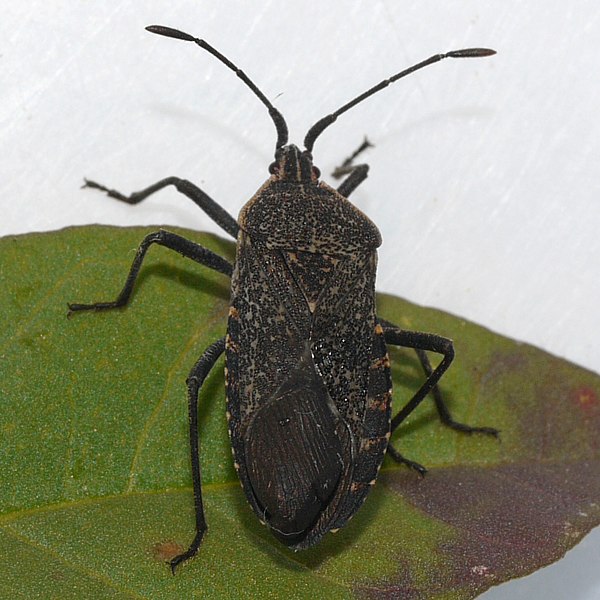
Squash bugs are another common pumpkin pest that could be responsible for your pumpkin plant’s flowering, but failing to bear fruit. These sap-sucking beetles like to munch on young seedlings and flowering plants, and suck the sap from your pumpkin leaves.
If your pumpkin is being eaten by squash beetles you will notice yellowing on the leaves from their feeding. Your pumpkin plant will not produce fruit because the gray-bodied beetles are sucking out all of the nutrients your plant needs.
Solution: One of the easiest ways to control squash beetles, is to lure them into a trap so you can dispose of them. All you have to do is lay out newspaper around your plants, and at night have a peek underneath. You should find several bugs happily hidden there, making it easy for you to remove them.
If the infestation is widespread, you can use neem oil to prevent the bugs from attacking your plants.
Squash Vine Borers
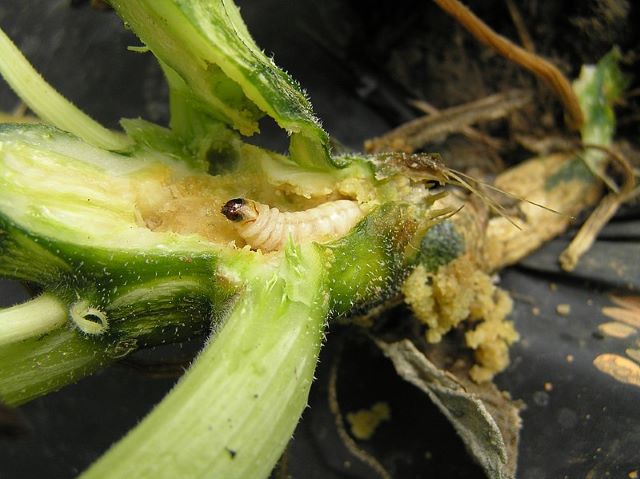
Squash vine borers are destructive insects that target various cucurbit plants. They are the larvae of clear-winged moths that eat the insides of your pumpkin’s vines. Squash vine borer damage to look out for is wilting leaves and holes near the base of the plant.
When squash vine borers infest a pumpkin plant, they interfere with the transport of water and nutrients. While the plant may still produce flowers, the stressed and weakened vine cannot support the energy-intensive process of fruit development.
Solution: This pest is difficult to control and little can be done once the vines of your pumpkin plant have been infested. To trap squash vine borers, you can fill a yellow-colored tray with soapy water, as they are attracted to the color yellow.
Another solution is to dust around your plant with diatomaceous earth to stop squash vine borers from entering your pumpkin plant’s vines.
Insecticidal soap can be used on any eggs and to stop any future eggs from being laid on the pumpkin leaves.
8. Diseases
Several diseases can cause your pumpkin plant to produce flowers, but not fruit. Diseases can strike unexpectedly, causing wilting, leaf discoloration, and hindering fruit development. Here are two diseases that can impact pumpkin fruit development:
Bacterial Wilt
Bacterial wilt, transmitted by cucumber beetles, can lead to your pumpkin plant flowering but failing to produce fruit. When your plant is infected with bacterial wilt, the leaves on your pumpkin plant will become a dull, dark green color and wilt during the day.
Over time, the leaves of your pumpkin plant will begin to turn yellow with brown margins. If you cut open the vine, it will ooze a stringy, thread-like substance. Once your pumpkin plant is infected, it will not produce fruit, even if there are flowers.
Solution: Unfortunately, there is no cure for bacterial wilt, therefore infected pumpkin plants need to be removed and destroyed. The best cure in this case is prevention. You can prevent the development of bacterial wilt by controlling the little pests that spread the disease; striped or spotted cucumber beetles.
Powdery Mildew
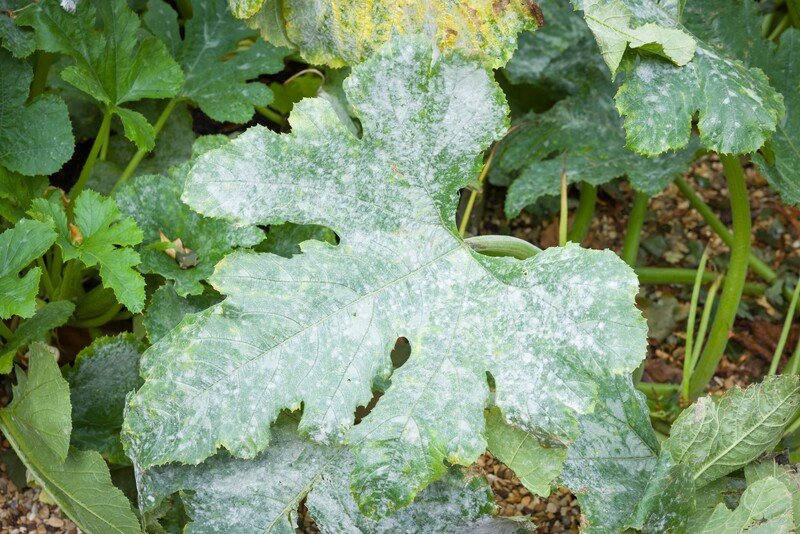
Powdery mildew is a common disease encountered by many pumpkin growers. This fungus can prevent your pumpkin flowers from producing fruit because it can cause them to drop off.
Powdery mildew starts as small white spots on your pumpkin leaves. These spots have a fuzzy, or powdery appearance. The mold quickly spreads to the vines and flowers, drying out flower buds. If left untreated the disease will cause your pumpkin’s leaves to dry up and drop off.
Solution: Luckily, powdery mildew can be treated! The first thing to do when you notice the powdery mold on your pumpkins is to remove any affected leaves or vines. The fungus can spread through contaminated garden equipment, so make sure you sterilize your tools with a mixture of bleach and water. And don’t compost the infected leaves.
Then I like to treat powdery mildew by using a DIY mixture of milk and water, which you can spray on your plants once every two weeks. This is my preferred method of treating powdering mildew because it’s simple and natural!
Another home remedy to prevent powdery mildew is a mixture of baking soda, washing-up liquid, and water. Combine one tablespoon of baking soda, and half a teaspoon of dishwashing liquid with 1 gallon (4 liters) of water. This works well as a preventative treatment by spraying plants every 2-4 weeks.
Finally, a copper-based fungicide is also effective and safe in organic gardening.
Related:
